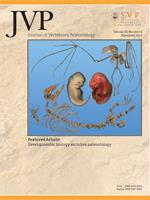Additional information about one of the oldest known gecko-like lizards, Hoburogekko suchanovi from the Early Cretaceous of Mongolia, is provided in light of recent advances in the understanding of gekkotan osteology. The phylogenetic affinities of this taxon were assessed by adding it into an existing morphological data set of 224 taxa coded for 364 characters. The effects of character ordering and scoring on tree topology and the composition of Gekkonomorpha were also explored. The results of the analysis indicate that Gekkonomorpha is highly unstable and additional revision of stem gekkotans (e.g., Parviraptor, Gobekko) is required to refine the basal relationships of this clade. Like modern gekkotans, Hoburogekko possess a tubular frontal bone. In contrast to extant gekkotans, the Meckelian canal is only partially fused and may represent an incipient form of the gekkotan condition. The posterior shelf of the maxilla is wider than in modern gekkotans, perhaps related to a plesiomorphically large jugal. The short, rounded snout may indicate a lifestyle as found in some modern gekkotans found in equivalent xeric environments to the inferred paleoenviroment of the Höövor (Mongolia) locality during the Early Cretaceous.
How to translate text using browser tools
1 November 2012
A Redescription and Phylogenetic Reinterpretation of the Fossil Lizard Hoburogekko suchanovi Alifanov, 1989 (Squamata, Gekkota), from the Early Cretaceous of Mongolia
Juan D. Daza,
Vladimir R. Alifanov,
Aaron M. Bauer
ACCESS THE FULL ARTICLE





